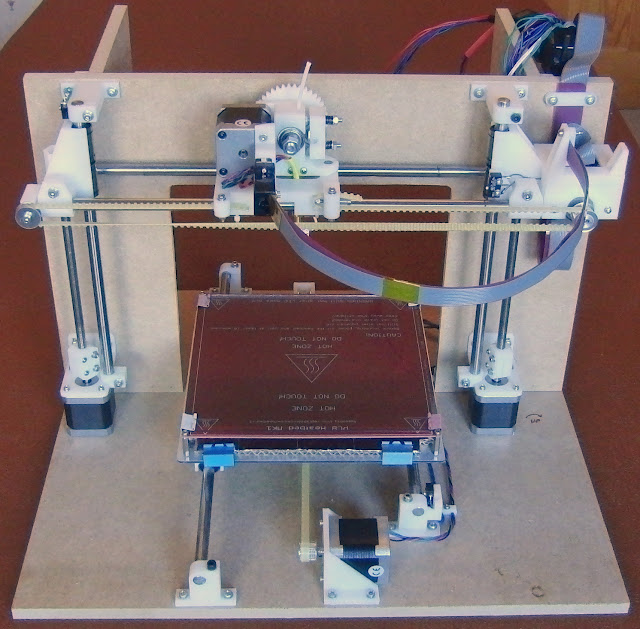I have been poked into doing a build thread of my current project of a 3D printer. So here goes.
I am a member of the reprap forum. http://reprap.org/. What is a reprap?
RepRap is humanity's first general-purpose self-replicating manufacturing machine.
RepRap takes the form of a free desktop 3D printer capable of printing plastic objects. Since many parts of RepRap are made from plastic and RepRap prints those parts, RepRap self-replicates by making a kit of itself - a kit that anyone can assemble given time and materials. It also means that - if you've got a RepRap - you can print lots of useful stuff, and you can print another RepRap for a friend...
RepRap was the first of the low-cost 3D printers, and the RepRap Project started the open-source 3D printer revolution. It has become the most widely-used 3D printer among the global members of the Maker Community.
Now to my project.. After much research and thought I found I like the design of the Mendel90, a design by Nophead that replaces many of the threaded rods and printed parts of the Prusa Mendel with flat sheets of MDF, Dibond, Acrylic or any other stiff sheet material. This simplifies construction, stiffens the frame, and always keeps the axes at 90 degree angles, hence the name. It is also the most customizable of the printers. By upsizing many of the parts, any size printer can be made.
Here is the mendel90 as built by Nophead, the gray panels are MDF wood.

My printer will be made of acrylic painted in green with white plastic parts.
Progress as of 3/18/15,
I have the base plate drilled for the mounting points. and ready for paint.
Next on the list to to build and install the Y axis ( the red bed looking thing, and the motor in center front in the above pic).
I am a member of the reprap forum. http://reprap.org/. What is a reprap?
RepRap is humanity's first general-purpose self-replicating manufacturing machine.
RepRap takes the form of a free desktop 3D printer capable of printing plastic objects. Since many parts of RepRap are made from plastic and RepRap prints those parts, RepRap self-replicates by making a kit of itself - a kit that anyone can assemble given time and materials. It also means that - if you've got a RepRap - you can print lots of useful stuff, and you can print another RepRap for a friend...
RepRap was the first of the low-cost 3D printers, and the RepRap Project started the open-source 3D printer revolution. It has become the most widely-used 3D printer among the global members of the Maker Community.
Now to my project.. After much research and thought I found I like the design of the Mendel90, a design by Nophead that replaces many of the threaded rods and printed parts of the Prusa Mendel with flat sheets of MDF, Dibond, Acrylic or any other stiff sheet material. This simplifies construction, stiffens the frame, and always keeps the axes at 90 degree angles, hence the name. It is also the most customizable of the printers. By upsizing many of the parts, any size printer can be made.
Here is the mendel90 as built by Nophead, the gray panels are MDF wood.
My printer will be made of acrylic painted in green with white plastic parts.
Progress as of 3/18/15,
I have the base plate drilled for the mounting points. and ready for paint.
Next on the list to to build and install the Y axis ( the red bed looking thing, and the motor in center front in the above pic).







